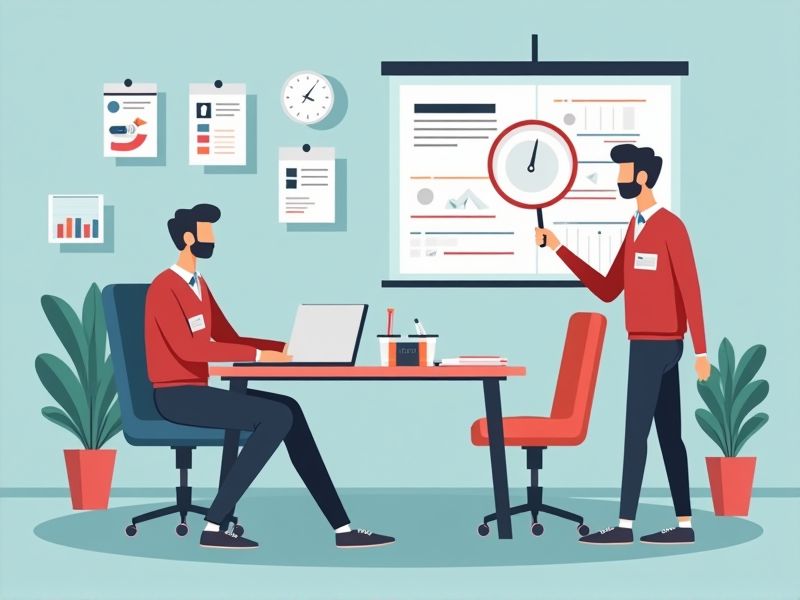
Albert Einstein once said, "We cannot solve our problems with the same level of thinking that created them," highlighting the importance of evolving our thought processes to tackle complex issues. This perspective encourages individuals to approach problems from new angles, fostering creativity and innovation in problem-solving. By adopting this mindset, one can transform seemingly insurmountable challenges into opportunities for growth and learning. Effective problem-solving often requires a shift in perspective, allowing us to uncover solutions that might have been obscured by our initial assumptions.
How To Be Better At Problem Solving
Understand the problem context.
Understanding the full context of a problem enables you to gather relevant data that guides your approach and decision-making. Analyzing the context reveals hidden connections among variables, making it easier to identify the root causes. This systematic insight drives you to develop tailored strategies that disrupt inefficiencies and improve outcomes. Clear contextual comprehension directly elevates your problem-solving effectiveness by ensuring every decision is backed by solid evidence.
Define clear objectives.
Start by clearly articulating the problem and what success looks like, ensuring your objectives are precise and measurable. This clarity helps pinpoint the exact challenges and streamlines your approach toward a targeted solution. With well-defined goals, you can quickly identify gaps in data and adjust your strategy based on real feedback. Clear objectives ultimately lead to more efficient resource allocation and a structured path toward resolving complex issues.
Decompose into manageable parts.
Divide the problem into smaller, more manageable parts to reduce the cognitive load and pinpoint the core issues. Breaking a problem down helps you isolate challenges, so you can address each part individually. This strategy allows for incremental progress, which builds confidence and enhances overall problem-solving skills. By tackling each segment methodically, you create a clear path toward a comprehensive solution.
Identify underlying assumptions.
Recognize that identifying underlying assumptions can reveal hidden biases in your reasoning and open new perspectives on challenges. Analyzing these assumptions encourages more precise data collection and validation, resulting in solutions that are grounded in reality. This technique fosters a deeper understanding of the problem context, driving teams to question established norms and explore innovative approaches. Continually applying this step improves decision-making and builds resilience against unforeseen complications.
Analyze key constraints.
Carefully pinpointing constraints allows you to target critical problem areas effectively. Analyzing these limitations generates actionable insights, which drive strategic decision-making and mitigate operational risks. Understanding key constraints supports the identification of root causes, ensuring that each step in the problem-solving process is data-driven and purposefully aligned. In turn, this focus not only strengthens your analytical approach but also streamlines the development of efficient solutions.
Explore creative alternatives.
Deliberately exploring creative alternatives broadens your perspective and helps uncover hidden solutions. When traditional methods seem inadequate, approaching the problem from unexpected angles can reveal unique opportunities for improvement. This shift towards innovative thinking uncovers subtle patterns and insights that conventional strategies might overlook. Embracing creative alternatives ultimately builds a more adaptable mindset, equipping you with robust problem-solving skills for diverse challenges.
Test potential solutions.
Begin by identifying a single potential solution and designing a small experiment to gauge its effectiveness. Testing your approach with specific metrics or benchmarks reveals crucial data on its strengths and weaknesses. By examining these results, you can refine your strategy and address any shortcomings before full implementation. This data-driven method not only minimizes resource waste but also strengthens overall problem-solving skills by iteratively improving the solution based on real-world feedback.
Reflect on outcomes.
Reflecting on outcomes is a critical pivot in honing problem-solving skills, as it creates visibility into what strategies yield effective results. Analyzing the effects of each decision provides data-driven insights that help isolate successful patterns from habitual errors. This assessment process enables you to recognize causal links between specific tactics and their respective outcomes, paving the way for iterative improvements. By continuously reviewing and learning from the results, you ensure that each problem-solving cycle is more refined and efficient than the last.
Seek external perspectives.
Engaging with individuals from diverse backgrounds exposes you to alternative approaches that may reveal underlying biases in your own methods. Diverse feedback highlights gaps and inefficiencies, enabling you to adjust your strategies based on real-world data and experiences. Actively seeking external perspectives fosters an environment where iterative learning drives improvement and innovation. Incorporating these insights ultimately leads to streamlined problem-solving that is both effective and adaptable.
Practice iterative refinement.
Iterative refinement involves breaking challenges into incremental steps and reassessing your approach at each stage. This process allows you to detect errors early, ensuring that each adjustment leads to more efficient progress. As you continuously modify your strategy based on real-time feedback, you build a robust solution that effectively adapts to new information. Consistently practicing iterative refinement transforms complex problems into manageable tasks, enhancing your overall problem-solving abilities.
Summary
Understanding the problem context provides a solid foundation by aligning the challenge with relevant factors and data. Defining clear objectives transforms abstract challenges into well-scoped targets that can guide decision-making. Decomposing the problem into manageable parts uncovers underlying complexities while enabling systematic analysis and streamlined workflows. Combined, these steps foster a structured approach that enhances the overall effectiveness and efficiency of problem-solving efforts.
